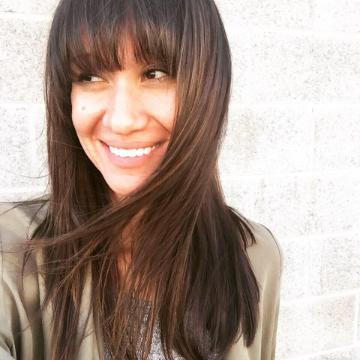
The Day I Was Invisible
I was recently reflecting on my undergraduate time at the University of Pennsylvania and remembered an experience that I have carried with me ever since. Early in my undergraduate experience, we were discussing the impact of the foster care system on Native American children in my sociology lecture, when a young woman raised her hand.
“Well, I’ve never known much less seen a Native American, so I really don’t know how they’d feel about this issue.”
Shaking, I raised my hand, stood up and looked at her directly.
“Well, now you’ve seen one.”
I realized that day I would often be the only Native voice in the communities I was a part of. In offices, on campuses, in social gatherings, and living spaces – I found myself being the only Sioux girl in a room of people who had no idea what it felt like to be Native.
For many of us who come from these communities, it can be discouraging to see us portrayed as caricatures or cartoons - another form of erasure we face regularly and can have a high impact in college.
When I became Facebook friends with a new connection the first photograph I saw her tagged in was as a “Native American Princess” for Halloween. For many of us who come from these communities, it can be discouraging to see us portrayed as caricatures or cartoons - another form of erasure we face regularly and can have a high impact in college. I heard Native American students left out of conversations at non-profits focused on recruiting high-achieving low-income students.
I came to terms with the fact that many had never been confronted with the issues I was aware of. I’ve been fighting to bring awareness every day since the day the girl told the classroom I was invisible to her.

Megan representing SCU at College Horizons, summer 2015.
I can only write about this feeling from the perspective of being Oglala Lakota Sioux, but I can imagine how the weight of being one minority college student in a crowd of many can feel daunting. There’s a commonality of experience in realizing that you’re not only carrying, say, your own tribal affiliation, but the 566+ other tribes that exist because you are the only Native someone has ever known. Suddenly, you are expected to be the resident expert on tribal sovereignty, environmental impact, decolonization theory, language revitalization, cultural connection, and all of the poverty, suicide, and alcoholism that the media portrays. The good and the bad are suddenly affiliated with you directly because you are their only connection.
With this responsibility comes the entirety of your family that you’ve brought with you to college: your parents, your siblings, and the cousins on the reservation who you love. Suddenly, being a minority isn’t about simply your experience, but the experience of every person you feel you have to take a stand for in every awkward lecture or discussion. This feeling can be heavy. It can be exhausting. It can be worth it.
Recently I received two messages from women who I knew in college. Both thanked me for continuing to expose Native America and for changing their minds about our presence and passion. So to every minority undergraduate who feels tired for carrying their people on their backs, I want to tell you: you are making a difference. Keep it up.
Oct 15, 2015

